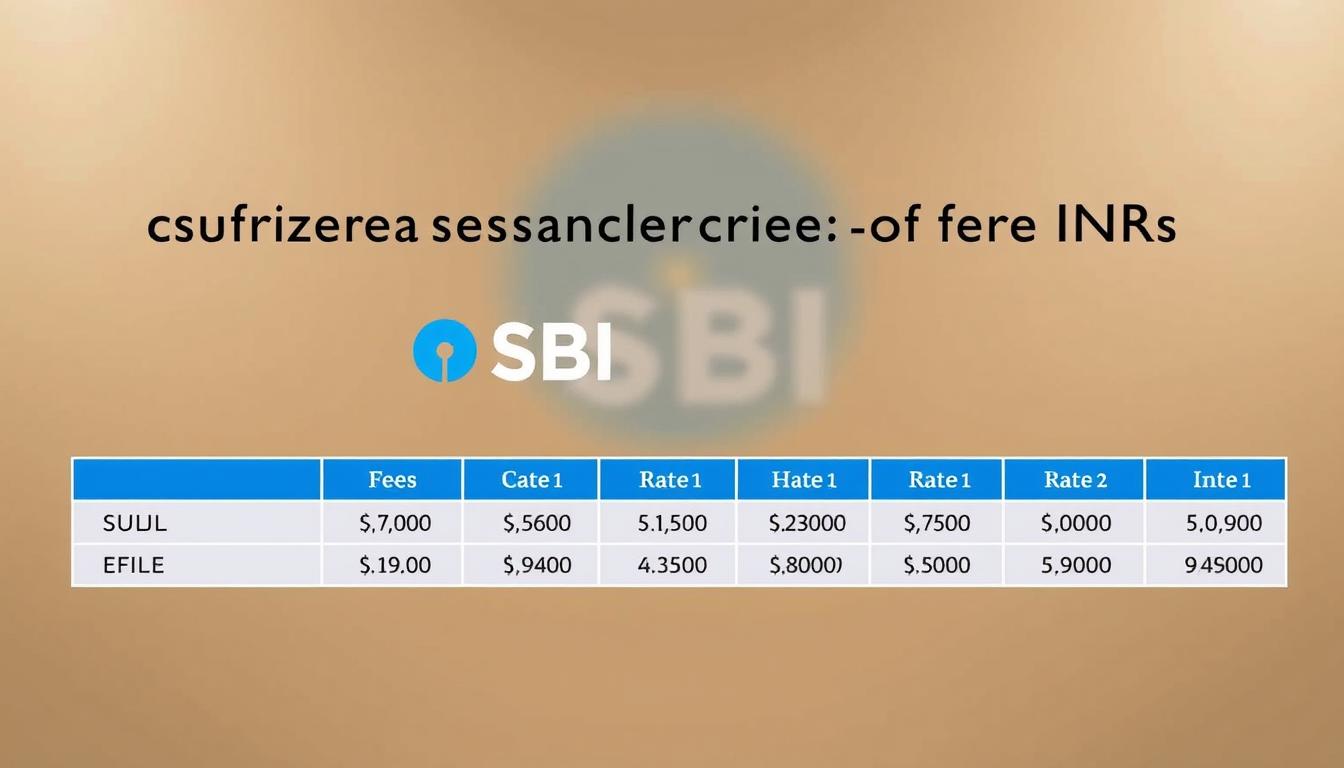Did you know that fluctuating exchange rates can significantly impact the cost of international transactions? For businesses and individuals in India, understanding how banks handle these rates is crucial. The State Bank of India (SBI), a major player in this space, updates its rates daily, offering tiered pricing based on transaction amounts.
For example, smaller transactions up to $10,000 may have a different rate compared to larger amounts. This tiered approach can affect the final amount received or paid. Hidden costs and fee structures further complicate the process, making it essential to analyze all factors carefully.
This guide will explore SBI’s pricing models, highlight potential hidden costs, and introduce cost-effective alternatives. Whether you’re a business owner or an individual, understanding these details can help you make informed decisions and save money.
Key Takeaways
- SBI updates its exchange rates daily, offering tiered pricing based on transaction amounts.
- Fluctuating rates and hidden costs can impact the final transaction value.
- Understanding fee structures is essential for cost-effective transactions.
- This guide will analyze SBI’s pricing models and explore alternatives.
- Knowledge of exchange rates can help businesses and individuals save money.
Understanding SBI Charges for Currency Conversion (USD to INR)
Navigating the complexities of international remittance can be challenging. The State Bank of India offers varied rates and fee structures depending on the type of transaction. Whether you’re sending money abroad or receiving funds, understanding these details is crucial for cost-effective transactions.
What Are SBI Currency Conversion Charges?
The bank applies different fees based on the transaction method. For instance, online remittance services typically charge 0.5%, while cash transactions can incur fees up to 2%. Additionally, GST is added to these charges, making it essential to factor in all costs.
How SBI Calculates Exchange Rates
The bank uses the TT Selling Rate method for conversions. This rate is determined by market conditions and includes a markup. For example, smaller transactions might have a rate of 87.09 INR per dollar, while larger amounts could be priced at 87.29 INR.
Factors Influencing SBI Charges
Several elements impact the final cost of foreign currency transactions:
- RBI regulations: The Liberalized Remittance Scheme limits transactions to $250,000 annually.
- Transaction size: Larger amounts often benefit from better rates.
- Operational costs: Correspondent bank fees and processing charges can add up.
By understanding these factors, individuals and businesses can make informed decisions and minimize unnecessary expenses.
Breaking Down SBI Charges for Different Transaction Amounts
Transaction size plays a key role in determining the final cost. Whether you’re sending or receiving funds, the amount involved directly impacts the fees and rates applied. This section breaks down the costs for smaller and larger transactions, along with additional fees that might catch you off guard.
Charges for Transactions Up to $10,000
For smaller transactions, the bank applies a 0.5% fee plus a flat fee of ₹250. This makes it a cost-effective option for individuals or businesses with lower transaction volumes. For example, a $10,000 transfer would cost ₹4,354.50 in fees. These competitive rates are ideal for frequent, smaller remittances.
Charges for Transactions Above $10,000
Larger transactions often come with better rates but higher fees. For amounts between $10,000 and $25,000, the rate is 87.29 INR per dollar. However, transactions above $50,000 require in-branch processing, which can add to the overall cost. A $50,000 transfer, for instance, could cost ₹8,729 in fees.
Additional Fees and Hidden Costs
Beyond the base fees, there are several hidden costs to consider:
- SWIFT charges: These can range from $15 to $50 per transaction.
- Intermediary bank fees: Often added for international transfers.
- GST implications: An 18% tax is applied to all service charges.
Understanding these additional costs ensures you’re not caught off guard. Always factor them into your budget for a smoother remittance scheme experience.
The Impact of SBI Charges on Your Business
Businesses often overlook how banking fees can erode their profits. High transaction costs, especially in international remittances, can significantly reduce the overall value of your operations. Understanding these charges is crucial for maintaining healthy profit margins.
How High Charges Affect Profit Margins
Every rupee spent on fees is a rupee less in your account. For businesses handling large transactions, even a small difference in exchange rates can add up. For example, a 0.2% rate gap can cost ₹17,458 annually on a ₹1 crore turnover.
Hidden costs like SWIFT charges and GST further eat into profits. These expenses can make a significant dent in your bottom line, especially for small and medium enterprises.
Comparing SBI Charges with Other Banks
When it comes to banking services, not all institutions are equal. HDFC offers a rate of 86.95 INR per dollar for transactions above $50,000, compared to SBI’s 87.29. Similarly, ICICI charges 0.3% for corporate accounts, while SBI’s fee is 0.5%.
Here’s a quick comparison of fees for equivalent transfers:
- SBI: 0.5% fee + ₹250 flat charge
- HDFC: 0.4% fee + ₹200 flat charge
- Axis Bank: 0.35% fee + ₹150 flat charge
Case Study: Real-World Examples
A textile exporter switched from SBI to a competitor and saved ₹2.1 lakh annually. The new provider offered better exchange rates and lower fees, significantly boosting their profit margins.
Another challenge with SBI is mandatory branch visits for large transactions. This adds compliance costs and delays settlements, leading to opportunity costs for businesses.
“Switching to a bank with lower fees and better rates can transform your business’s financial health,” says a financial advisor.
By analyzing these factors, businesses can make informed decisions and choose the best banking services for their needs.
Solutions for Cost-Effective Currency Conversion
Finding ways to reduce costs in international transactions is essential for businesses and individuals alike. Whether you’re sending remittance or receiving funds, understanding how to optimize rates and fees can lead to significant savings. This section explores practical strategies and alternatives to traditional banking methods.
Exploring Alternatives to Traditional Banks
Traditional banks often come with higher fees and less flexibility. Fintech platforms, on the other hand, offer competitive exchange rates and lower fees, typically ranging from 0.1% to 0.3%. These platforms are ideal for those who prefer online banking and want to avoid the hassle of visiting a physical branch.
For example, some platforms provide automatic rate alerts and bulk transaction discounts, making them a cost-effective choice for businesses. Additionally, digital solutions like Karbon FX offer API integration and fees as low as 0.15%, ensuring seamless and affordable transactions.
How to Minimize SBI Charges
If you’re using a traditional bank account, there are still ways to reduce costs. Negotiating corporate rates for high-volume clients can lead to better deals. Comparing TT rates and asking for a detailed fee breakdown can also help you identify hidden costs.
Monitoring RBI guidelines ensures compliance while maximizing savings. For instance, transactions above $50,000 often require in-branch processing, which can be time-consuming and costly. Exploring online platforms for better rates, such as 86.95 INR per USD, can be a smarter alternative.
Subtle Mention of Karbon FX as a Solution
For those seeking a modern approach, Karbon FX stands out as a digital solution. With API integration and fees as low as 0.15%, it simplifies the process of sending remittance. Its competitive rates and user-friendly platform make it a reliable choice for businesses and individuals alike.
Here’s a quick checklist to ensure cost-effective transactions:
- Compare TT rates across platforms.
- Ask for a detailed fee breakdown.
- Monitor RBI guidelines for compliance.
- Consider digital solutions like Karbon FX for better rates.
Conclusion
Understanding the nuances of international transactions can save businesses and individuals significant amounts. SBI’s tiered pricing model benefits large-volume transactions, offering competitive rates for bulk remittances. However, it’s crucial to monitor RBI’s LRS updates and stay aware of rate fluctuations to make informed decisions.
Businesses should audit their transaction histories to identify hidden fee patterns. Comparing traditional bank rates with fintech solutions can also lead to substantial savings. For instance, platforms like Karbon FX often provide better exchange rates and lower fees.
Before initiating transfers, use SBI’s online calculator to estimate costs accurately. This tool helps ensure transparency and avoids unexpected expenses. Whether you’re a business or an individual, taking these steps can optimize your currency transactions and maximize savings.
For more details on competitive exchange rates, explore SBI’s supported currencies and tools.







